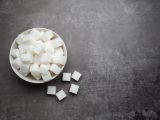Gelatin? No thanks! 5 natural alternatives for mouthwatering desserts

Gelatin is a classic in the kitchen, but it is not the only option for giving texture to our desserts. On the contrary, there are numerous natural and vegan alternatives, perfect for those looking for lighter, healthier preparations without sacrificing taste. These alternatives will allow you to experiment with different textures and flavors, creating unique and irresistible desserts. Discover 5 easy-to-use ingredients to make mouthwatering desserts without gelatin. In this article you will find all the information you need.
1. Agar Agar
Agar agar is a natural gelling agent extracted from red algae (Gracilaria and Gelidium). It is one of the most popular alternatives to animal gelatin and is the superhero of vegans and vegetarians in the kitchen. This natural gelling agent is much more potent than animal gelatin, so just a pinch is enough to transform your recipes. Whether you want to create fluffy mousses, creamy panna cotta or colorful jellies, agar agar is your perfect ally.
What are the benefits of agar agar?
- Agar agar is rich in fiber, making it useful for aiding digestion.
- It does not add significant calories to recipes, making it ideal for those on low-calorie diets.
- Solidification at room temperature: Does not require refrigeration to thicken.
2. Carrageenan
Derived from another variety of red algae (Chondrus crispus, also known as Irish moss), carrageenan is a natural ingredient that makes foods creamier and smoother. You often find it in ice cream and puddings, where it creates that mouthwatering texture. Unlike gelatin, carrageenan forms more elastic and heat-stable gels: the type of gel formed by carrageenan depends on its variety (kappa, iota, lambda) and the presence of ions such as calcium.
What are the benefits of carrageenan?
- It is often used to impart a rich texture even to vegan or lactose-free products.
- Suitable for making desserts with a velvety texture, such as creams and puddings.
3. Pectin
Pectin is a natural fiber hidden in the skins of fruits such as apples and oranges. To activate its gelling properties, it must be combined with sugars and acids, making it ideal for making jams, preserves and fruit jellies. Pectin forms stiffer and more heat-stable gels than gelatin.
What are the benefits of pectin?
- Pectin has beneficial effects on the digestive system and is a soluble fiber that can help reduce cholesterol levels.
- It does not require the addition of chemicals or additives to achieve a gel-like consistency, and it is completely natural.
4. Corn Starch (Maizena)
Corn starch (also known as cornstarch ), made from the inside of the corn kernel, is a key ingredient in cooking to thicken and bind liquids. When heated, cornstarch forms a network that traps water, resulting in a thick, creamy consistency. Unlike gelatin, which creates a firmer, more transparent gel, cornstarch offers a softer, velvety texture-ideal for puddings, cakes, creams and sweet sauces.
What are the benefits of corn starch (cornstarch)?
- It is naturally gluten-free, making it suitable for people with celiac disease.
- Corn starch is very inexpensive and can be purchased at any supermarket.
- It does not alter the taste of the preparations in which it is used.
5. Locust bean seed flour
Carob seed flour, made from the seeds of the carob tree, is a powerful natural thickener. It is often used in gluten-free or vegan preparations, as it can replace both animal gelatin and eggs, giving desserts a thick, creamy texture. It forms more opaque and stable gels than gelatin. It has a slightly sweet taste and a slightly bitter aftertaste.
What are the benefits of locust bean gum?
- It helps improve intestinal health due to its high fiber content.
- Carob contains polyphenols, which act as natural antioxidants.
- Suitable for vegetarians and vegans. Contains no gluten and has a low glycemic index.
You might also be interested in:
 Daniele Mainieri
Daniele Mainieri


Comments